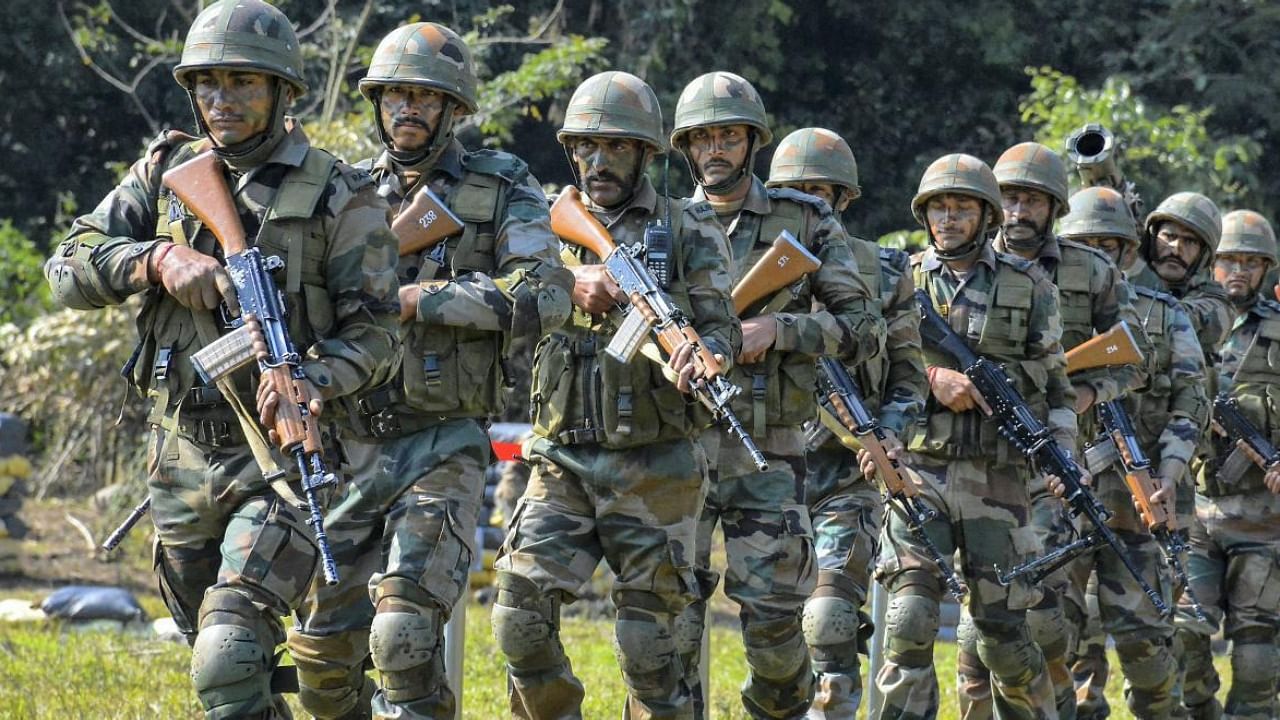
Four airports, better roads, improved amenities for the army personnel deployed in the snow-clad high altitudes, refurbished refurbished Advance Landing Grounds (ALGs) and a tunnel are getting ready to provide an all-weather road to Tawang. Indian defence forces posted in Arunachal Pradesh have become better equipped in the past few years in order to tackle Chinese threats along the Line of Actual Control (LAC).
As the scuffle between Indian and Chinese forces at Yangtse in Tawag, atop 10,000 feet on December 9 left many worried, Indian defence officials posted in Arunachal Pradesh and the local administration assured that their forces are now better equipped to tackle the Chinese threat.
The Centre has not only improved infrastructure and facilities for the defence forces but has also tried to retrace Arunachal Pradeh's "Lord Krishan connections" with rest of India in order to counter China's claim over the frontier state.
This, according to army officials posted in the Northeast, could be one of the reasons leading to Chinese aggression on the LAC and attempt to transgress into Indian territories. "The Chinese have constantly tried to foment trouble on the border at regular intervals. One plausible reason can be testing India’s resilience and reaction to individual situations. China has been keeping a close watch on our steady infrastructure growth in the areas and it is no doubt a matter of grave concern for them," Suneet Newton, a retired Lt.Col, who served in the Northeast, told DH.
Newton said China is also ruffled by the strong stand taken by the Indian government on the issues concerning the LAC.
Long before the Tawang scuffle, India refurbished seven ALGs, which remained unused since the 1962 war. The work on the ALGs began 2013 and are now ready for operations. The Border Roads Organisation too have stepped up work to complete the Sella tunnel by January.
The Minister of defence for state, Ajay Bhatt told the Parliament on Monday that 664-km roads have been constructed in the bordering areas in Arunachal Pradesh in the past five years.
Krishna connection to Arunachal
Apart from revamping infrastructure to support the army and IAF, the Narendra Modi government has started retracing the civilizational roots Arunachal Pradesh shared with the rest of India. Modi, during his visits to the frontier state has stated that Arunachal Pradesh has a "sacred relationship" with Gujarat as Lord Krishna of Dwarka (Gujarat) had married Rukmini from Arunachal Pradesh, belonging to the Idu Mishmi tribe.
A team of the National Monuments Authority, during their visit in June stated that Parushuram Kund, Bhishmaknagar, Bhalukpong and Tawang are a few indigenous sites of archeological importance that connect Arunachal Pradesh with Gujarat, Goa and Kerala.
The Centre has also started documenting the "unsung heroes" of Arunachal Pradesh, who had fought in the Freedom Movement but have remained unknown outside the state.
This, according to observers, is aimed at countering China's claims that Arunachal Pradesh is part of its South Tibet region.
The Indian forces have also recently celebrated 60 years of the Battle of Wallong, where the Indian forces had fought and held back the Chinese troops for 27 days before their defeat in 1962.
"Outnumbered and with little ammunition and no resource of any kind, the valiant troops continued to hold their ground in a classic example of fighting till last man, last ground," the army's 4 Corps, based at Tezpur (Assam), said in a statement in October.
In November 1962, the Chinese troops had reached Tezpur forcing many residents to flee. The PLA forces, however, had withdrawn their troops later.
"It's not 1962 anymore. If anyone tries to transgress, our brave soldiers will give a befitting reply," Arunachal Pradesh Chief Minister, Pema Khandu said on December 13, a day after the report about the Tawang clash came to light.
Prime Minister Narendra Modi, who visited Meghalaya and Tripura on December 18, his first to the Northeast after the Tawang clash, said that infrastructure development in the Northeast at a fast pace was a priority for his government.
He said that infrastructure in the villages along the international borders, including in the Northeast, are being revamped under the "Vibrant Village" programme. "Earlier, it was said that better amenities in the border villages would help our enemies. But our approach is different. We have taken up projects to provide better roads, proper houses and electricity in order to allow the villagers to sell their products outside for livelihoods. This has started encouraging people to go back to their native homes in the border villages, which they had fled earlier due to lack of amenities," Modi said.